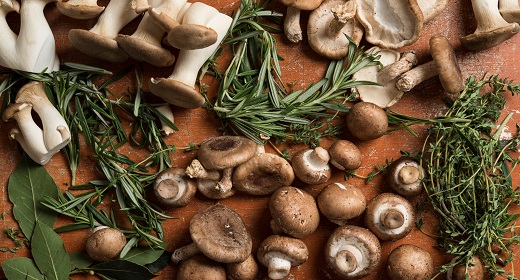by Adrienne Breaux: Keeping your houseplants their healthiest can seem at times to be a complicated endeavor…
There are all the ways they can perish if you’re not careful, and lots of conflicting advice, habits, and products about how to care for them. But having a house full of happy, healthy green leaves doesn’t actually have to be all that difficult, especially if you pay attention to their needs. Your houseplants might not be able to speak words aloud, but they can tell you a lot if you learn how to listen, look, and touch. You can discover a lot by simply inspecting your plants — examining their leaves, stems, soil, and more — and by doing so regularly. In fact, when it comes to keeping your houseplants healthy, the plant pros below prescribe doing this one simple task every day:
Inspect your plants daily
Darcie Young Tashey, who’s a plant parent to over 100+ plants in her Chicago home, says one thing you should do every day is to really take the time to enjoy your plants, but also really observe them. “I have found that living with plants as decor for so long, they start to blend into the background and go unnoticed. Unnoticed plants can quickly become neglected plants. And neglected plants can even quicker become dead plants (unless it’s a plant that thrives off neglect),” she says. Darcie goes on to explain that inspecting your plants thoroughly can help you understand what they are requesting. For example, you can feel for leaves that are drooping or look for leaves that are starting to brown at the edges. “That plant is probably ready for a drink of water,” she explains. “Sometimes you’ve forgotten to water a plant for so long that the soil is dry to the point of cracking and pulling away from the edges of the pot. If this is the case, just take the plant to the sink and run it under the faucet to ensure the water saturates the soil. Leaves turning yellow, especially starting from the bottom? That plant may have gotten TOO much water and needs time to dry out. Try moving it closer to the light or running a fan in the room. Roots popping out of the bottom of the pot? That one should go on your list of plants to re-pot next spring,” says Darcie.
Donovan Ho‘s San Francisco home is filled with fun colors, textures, eclectic home decor, and lots of plants, and he also agrees that examining your plants’ leaves up close is a good daily task. In fact, he says you can often tell if a plant is “calling out” for help. “Look for anything out of the normal, like curling leaves, discoloration, or even pests. Regular examinations will help catch any problems early on before they because too detrimental.”
Alessia Resta, also known as the Apartment Botanist, lives in a 750-square-foot NYC rental apartment with over 175 plants that she says she inspects every day. “Studying and paying close attention to my plants helps strengthen my innate understanding of them. It’s something that may take time, but the more time you spend getting to know your plants, you can begin to assess their needs. Signs of pests, over/underwatering, stress will be easier to spot once you start paying close attention.”
Sophia Kaplan and Lauren Camilleri are business partners at Sydney-based indoor plant and pot delivery service Leaf Supply (and Sophia’s Australian home is stunning), also suggest checking on your plants frequently. “Plants are pretty good at communicating through their foliage; is your plant super droopy and sad? They probably need a more regular drink,” begins Lauren. “Is growth leggy and stretched out? Your plant is reaching out for light and will probably do better in a brighter position. Paying attention, whether that be talking or singing to your plants or simply noticing them and giving them a once over on the reg will allow you to not only appreciate the beauty of them when they’re happy and healthy but will also allow you to pick up on any issues that may arise before they have a chance to take hold.”
One of Sophia’s favorite tricks is dipping a finger in the soil to check your plant’s moisture levels. “Although I wouldn’t be doing this daily as it may irritate the plant’s root system, taking the dip every few days or so, especially as you’re getting used to a new plant’s moisture rhythm, is the best way to ensure they’re never under or over watered.”
Cyril Sontillano‘s Monterey apartment is bursting with fresh green plants that he gives daily spot checks to. “Allot a few minutes every day to check your plants. I find that spending a few minutes every day and tackling specific areas like Monday for living room plants, Tuesday for kitchen plants, etc. seems easier for me to manage instead of my old routine where I spent my entire weekend doing plant care all day. Accomplishing small tasks daily is more manageable and less overwhelming for me and the perfect decompression time after work as well.”
Gabriel and Victor, who take care of plants in their Buenos Aires home and at Planta, their plant and housewares shop, say that observation is the key to healthy house plants. “There is no secret; if we are attentive and sensitive to their changes, we will understand their needs.”

Though, if daily plant check-ins aren’t a fit for your own schedule, don’t worry. Marita McCausland, owner of interiors and indoor plant store Into the Wild (and whose Australian home is full of gorgeous plants), suggests a bit more laidback of an approach to plant care than the experts above. “I think where a lot of people go wrong is giving their plants too much love. We don’t need to be interacting with them all the time with watering or fussing too much, certainly not on the daily anyway. Just once a week or so, check in with your plants, lift the pot to see if it’s light and needs water, and also make sure the leaves are clean and free of dust and bugs.”
Adrienne Breaux
HOUSE TOUR EDITOR
 Adrienne loves architecture, design, cats, science fiction and watching Star Trek. In the past 10 years she’s called home: a van, a former downtown store in small town Texas and a studio apartment rumored to have once been owned by Willie Nelson.
Adrienne loves architecture, design, cats, science fiction and watching Star Trek. In the past 10 years she’s called home: a van, a former downtown store in small town Texas and a studio apartment rumored to have once been owned by Willie Nelson.









































